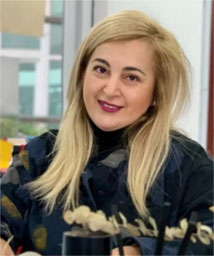session 2: 2021 August 9 - August 27
session 2: 2021 August 9 - August 27
St. Mary's Online Academy (SMOA) is a global online learning platform offered by St. Mary's School, a renowned U.S. private preparatory school located in Medford, Oregon.
Our school started in 1865 in southern Oregon, located on the beautiful west coast of the United States of America. St. Mary's School has grown to provide an authentic American elementary, middle, and high school education to students in China, South Korea, Vietnam, and other parts of the world. Our integrated online courses are taught by an experienced American faculty whose skills and commitment are second to none.
We take pride in the program we deliver to your child! Courses are taught during normal school hours in Asian standard time. Online and offline learning networks are available to students.Live classroom and in-person, on-campus instruction is available.Students choose to attend online learning only or a combined offline/onsite learning environment. Students earn credits and receive transcripts and diplomas from St. Mary's School in Oregon.We offer a strong, professional and experienced bilingual tutoring team available to your student.One-to-one academic guidance and family education consultation is offered to all SMOA students and families. Our program provides a one-stop solution for students and parents interested in international education who want a full range of options and services.


Ms.Selda Acar graduated from Turkey's best fine arts academy, which is Mimar Sinan Fine Arts University, she received higher education on Textile and art. She has degrees in various design competitions. She worked on fashion in London, England, prepared special collections, and taught painting and art for an early age. She worked as an art teacher in different courses and schools between 2005-2013. She also gave her students preparatory training for the art academy entrance exams.
This course allows students to use creative art resources such as drawings, prints, sketches, and crafts. They express themselves and somehow develop their creativity. It introduces them to the definition of art, art movements, and artists. With these art resources they have learned, they will gain new skills and discover their hidden talents with these tools. It will also give them an international understanding of creative forms. With this artistic perspective they have acquired, they will be able to criticize works of art and generate ideas about them.
Skech book
Canvas
Drawing pencils
Mechanical pencil
Blending stump
Eraser,pencil sharpener,
Watercolor
Aycrilic
Markers
Colored pencils
Pastels&Crayons
Inks
Brushes
Palette knifes
Palette
Drawing board
Glue
Scirrors
Bant
Etc.
During this art education period, students will receive education on the following topics. What is art? What is its definition? A short history of art education. What are the art materials and tools? What are the functions of art? What are the elements of art? What are the principles of art? Line element in art. What is the color? What are the color harmony and schemes? What is shape and form in art? What are the differences between shape and form? Shading, light & shadow studies in painting. What is Perspective?, Space and depth in art. In addition, they will receive training on anatomic human head and body drawings at the beginner level.In addition to painting and drawing, they will create concert and movie posters and learn about artists such as Edward Munch, Leonardo Da Vinci and different art movements such as Pop-art and Surrealism,etc.
They will make presentations and drawings enriched with various examples on these topics. They will perform original works by using their knowledge, aesthetic aspects, their inner world, their imagination, their vision, their culture, and their creative knowledge by using the knowledge they have gained in their artworks. In these studies, they can make choices of their own interests in the selection of topics.
As the examples below;
Sports, music, poetry, art (favorite art movement or artist), literature, history, cultural events, fashion, drama, cinema, cartoon characters, games, superheroes, cartoon characters, portrait, love of nature, animal, etc.
Perception
Using Information Technologies
Versatile Thinking
Providing Hand-Eye-Brain Coordination
Visual Literacy
Artistic Ethics
Design
Observing
Synthesis
Analyzing
Evaluation
Critical Thinking
Aesthetic Sensitivity
Cultural heritage
Self Awareness
Media Literacy
Using Materials
Creative Thinking